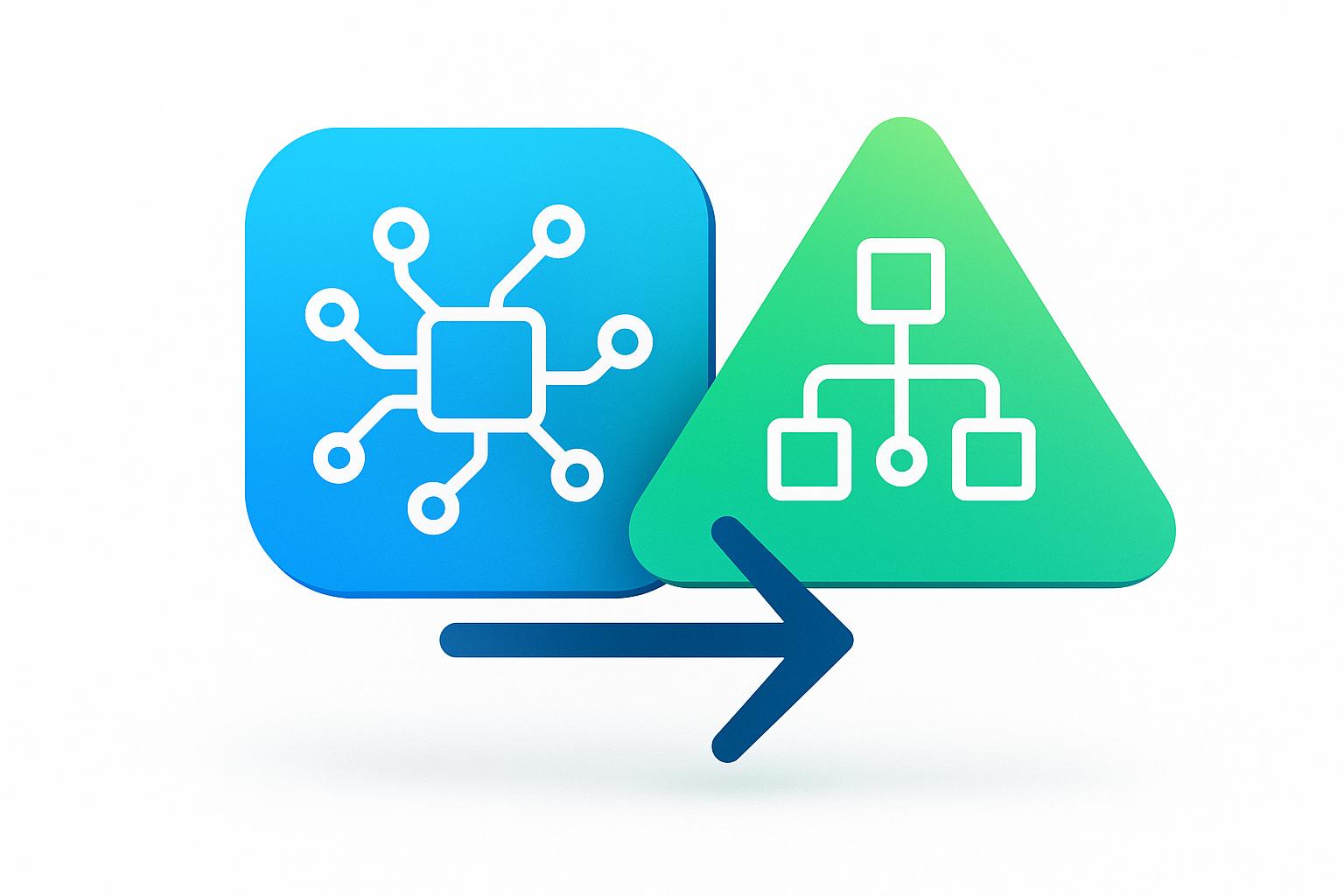Cross-border payments are a major target for fraud, causing $485 billion in global losses in 2023. AI is transforming fraud detection by analyzing transaction patterns, enhancing security, and reducing false alerts. Key technologies like machine learning, federated learning, and natural language processing (NLP) are helping banks and businesses detect fraud in real-time while maintaining data privacy.
Key Takeaways:
- Fraud Risks: 63% of card fraud cases stem from cross-border payments, despite making up only 11% of transactions.
- AI Solutions:
- Machine Learning: Predicts fraud using transaction history and patterns.
- Federated Learning: Enables banks to collaborate securely without sharing sensitive data.
- NLP: Automates compliance checks and document verification.
- Benefits: Faster fraud detection, fewer false positives, and improved compliance.
Small businesses can also adopt AI tools to protect transactions, reduce risks, and streamline compliance processes. Start by integrating AI into existing systems, ensuring accurate data, and regularly updating models to combat evolving fraud tactics.
Can cross-border payments be disrupted by AI?
AI Technologies for Fraud Detection
AI technologies are now playing a critical role in fighting cross-border payment fraud, helping reduce losses that hit USD 485 billion in 2023 .
Machine Learning for Fraud Prediction
Machine learning is tackling increasingly sophisticated cross-border fraud by analyzing historical transactions to predict fraudulent activities. In early 2025, Swift and Google Cloud launched a federated learning system. This system allows 12 global banks to train AI models locally while sharing only insights, ensuring data privacy .
| Feature | Traditional ML | Federated Learning |
|---|---|---|
| Data Privacy | Centralized data storage needed | Data remains within each bank |
| Learning Scope | Limited to individual institutions | Draws from multiple sources |
| Implementation | Deployed by individual banks | Collaborative network approach |
"Swift is in a unique position in the financial industry – a trusted and cooperative network that is integral to the functioning of the global economy. As such, we are ideally placed to lead collaborative, industry-wide efforts to fight fraud. This exploration will help the community validate whether federated learning technology can help financial institutions stay one step ahead of bad actors through sharing of fraud labels, and in turn enabling them to provide an enhanced cross-border payments experience to their customers." – Rachel Levi, head of artificial intelligence, Swift
Pattern Recognition Systems
Pattern recognition systems add another layer of defense by analyzing real-time transactions to detect emerging fraud patterns. These systems evaluate factors such as location behaviors, currency exchange trends, spending habits, and payment flows. BNP Paribas has successfully integrated this technology into Swift's infrastructure to improve fraud detection.
"Collaboration across the banking sector is crucial to enhancing fraud detection, and by sharing data and leveraging AI, we empower ourselves to stay ahead. At BNP Paribas, we are fully committed to supporting Swift's innovative initiative in that regard, as it marks a key step forward in protecting the integrity of our financial ecosystem." – Olivier Nautet, Head of Cybersecurity, BNP Paribas; Nicolas Trimbour, Head of Fraud Prevention, Cash Management, BNP Paribas; and Su Yang, Head of Artificial Intelligence, Transaction Banking, BNP Paribas
NLP in Payment Compliance
Natural Language Processing (NLP) is transforming compliance checks and document verification in cross-border payments. The global NLP market for banking and financial services is expected to reach $20.3 billion by 2031 . NLP supports fraud detection by analyzing unstructured text data, monitoring communications, simplifying regulatory reporting, and automating translations for international transactions. Lemonade's AI chatbot, which handles 40% of claims without human involvement , highlights the potential for automation in payment verification.
These AI-driven advancements work together to create a stronger, faster, and more secure system for managing cross-border payments.
"Payment fraud stands as one of the greatest threats that undermines the integrity and stability of the financial ecosystem, with its impact acutely felt upon some of the most vulnerable segments of our society." – Sudhir Pai, chief technology and innovation officer, Financial Services, Capgemini
Setting Up AI Fraud Detection
AI Payment System Integration Guide
Implementing AI fraud detection for cross-border payments requires careful planning and execution. In 2023 alone, organizations faced losses totaling $3.1 billion due to fraud, with a median loss of $117,000 per incident .
| Implementation Phase | Key Activities | Success Metrics |
|---|---|---|
| Data Collection | Gather transaction histories, customer details, and threat intelligence | Data completeness rate |
| System Integration | Link APIs, platforms, and test systems | Integration success rate |
| Model Training | Review transaction data and detect patterns | Detection accuracy |
| Monitoring | Evaluate system performance and manage alerts | Response time and false positive rate |
Swift plans to launch its AI-powered fraud detection service in January 2025. This service will use pseudonymized data from billions of transactions to spot suspicious activity in real time . These steps provide a solid framework for organizations, including small businesses, to adopt AI-driven fraud prevention.
Small Business AI Advantages
With a secure integration framework in place, small and medium-sized businesses can tap into AI fraud detection to improve efficiency and minimize risk. AI systems simplify screening, enable real-time threat detection, and scale protection as transaction volumes increase. This technology makes advanced fraud prevention tools accessible to businesses of all sizes, leveling the playing field.
Bank Success Story: AI Fraud Prevention
Standard Bank Group, Africa's largest bank by assets, serves as a strong example of how AI fraud detection can enhance security. Their collaboration with Swift demonstrates how real-time pattern recognition can protect cross-border payments.
"Standard Bank Group, Africa's biggest bank by assets, has participated in Swift's initiative for AI fraud detection capability to enhance the security of its customers' transactions. The technology will identify suspicious patterns in real time, reducing fraud risk and ensuring a safer banking experience for clients. By leveraging the power of AI, Standard Bank Group reaffirms its commitment to innovation and safeguarding the financial assets of its clients - who are our main asset."
– John McHugh, Head Operations Control – CIB, at Standard Bank
The bank achieved this through Swift's Payment Controls Service (PCS), implementing real-time monitoring, using advanced pattern recognition, and fostering collaboration in fraud detection. This aligns with a broader trend, as over 85% of fintech companies now incorporate AI into their systems .
sbb-itb-17e8ec9
AI Fraud Detection Guidelines
Industry Cooperation in Fraud Prevention
Preventing fraud on a global scale requires seamless data sharing between institutions. A recent collaboration between Swift and Google Cloud brings together 12 banks to enhance fraud detection using federated learning techniques .
Here’s how working together benefits the industry:
| Benefit | Description | Impact |
|---|---|---|
| Shared Intelligence | Combines fraud data from multiple sources | Improves detection accuracy |
| Privacy Protection | Keeps data confidential with federated learning | Ensures compliance with regulations |
| Network Effects | Larger datasets refine AI models | Speeds up threat identification |
| Cost Efficiency | Shared resources lower costs per institution | Cuts compliance expenses by 50% |
BNP Paribas is a great example of this collaborative approach. Leaders at the bank, including Olivier Nautet (Head of Cybersecurity), Nicolas Trimbour (Head of Fraud Prevention Cash Management), and Su Yang (Head of Artificial Intelligence Transaction Banking), emphasize the importance of cooperation:
"Collaboration across the banking sector is crucial to enhancing fraud detection, and by sharing data and leveraging AI, we empower ourselves to stay ahead. At BNP Paribas, we are fully committed to supporting Swift's innovative initiative in that regard, as it marks a key step forward in protecting the integrity of our financial ecosystem."
While these partnerships boost fraud detection, institutions still face challenges when implementing AI solutions.
Common AI Implementation Challenges
Even with collaboration, institutions must tackle several obstacles:
| Challenge | Impact | Potential Solution |
|---|---|---|
| Data Quality Issues | Leads to unreliable detection | Strengthen data management practices |
| Regulatory Compliance | Complicated international rules | Develop region-specific AI frameworks |
| Model Transparency | "Black box" decisions create trust issues | Build explainable AI systems |
| Privacy Concerns | Stricter data protection laws | Use federated learning techniques |
To overcome these hurdles, organizations should focus on:
- Regularly assessing risks to pinpoint system weaknesses
- Strengthening security with multi-layered controls and robust authentication
- Enhancing KYC (Know Your Customer) and KYB (Know Your Business) processes
- Training employees thoroughly on fraud prevention methods
Solutions like Tookitaki's FinCense show what’s possible. This system achieves 90% accuracy in real-time fraud detection while cutting compliance costs by half .
What's Next for AI Payments
Faster Payment Processing
AI is revolutionizing cross-border payments, enabling real-time transactions that were once only a vision. The World Economic Forum predicts that AI could increase global GDP by 7% over the next decade . This shift is changing how businesses manage international payments.
| AI Feature | Current Impact | 2025 Projection |
|---|---|---|
| Transaction Speed | Same-day processing | Real-time settlement |
| Currency Matching | Manual processes | Automated optimization |
| Risk Assessment | Rules-based systems | Predictive modeling |
| Cost Reduction | Multiple intermediaries | Streamlined processing |
"Swift is in a unique position in the financial industry – a trusted and cooperative network that is integral to the functioning of the global economy. As such, we are ideally placed to lead collaborative, industry-wide efforts to fight fraud. This exploration will help the community validate whether federated learning technology can help financial institutions stay one step ahead of bad actors through sharing of fraud labels, and in turn enabling them to provide an enhanced cross-border payments experience to their customers" .
These advancements in processing speed are paving the way for equally impactful changes in compliance systems.
Simplified Compliance Systems
With regulations increasing by 15% annually over the last decade , compliance has become a growing challenge. Recent penalties exceeding $450,000 for compliance failures underscore the need for more efficient solutions .
"At Google Cloud, we are committed to empowering financial institutions with cutting-edge technology to combat the evolving threat of fraud. Our collaboration with Swift exemplifies the transformative potential of federated learning and confidential computing. By enabling secure collaboration and knowledge sharing without compromising data privacy, we are fostering a safer and more resilient financial ecosystem for everyone" .
AI is set to transform compliance systems by introducing features like:
- Real-time Validation: Systems that instantly verify transactions across different jurisdictions.
- Automated Reporting: Tools that generate compliance reports without manual effort.
- Predictive Compliance: AI models that adapt to regulatory changes in advance.
- Enhanced Due Diligence: Machine learning-powered KYC/KYB processes for better accuracy.
"As cross-border payments continue to grow and technology evolves, so will the risk around cybersecurity and fraud. As an industry we all need to come together making security a critical, and shared, responsibility. We must take preventative measures to maintain trust and security in the payments system" .
Conclusion
In 2023, global fraud losses hit a staggering USD 485 billion . AI is now reshaping fraud protection, especially in cross-border payments, by offering smarter, faster defenses.
Key Areas for Small Businesses to Focus On
| Area of Focus | Impact | Advantage |
|---|---|---|
| Real-time Analysis | Detects fraud instantly | Identifies suspicious patterns to minimize losses |
| Compliance Automation | Simplifies compliance tasks | Eases the burden of adapting to changing regulations |
| Data Management | Boosts detection accuracy | Leads to better decision-making |
These insights provide a clear path for businesses to start integrating AI into their operations.
How to Get Started with AI
Here’s a simple plan to begin using AI effectively:
- Focus on strong data management: Ensure your data is accurate and compliant with regulations.
- Integrate AI with existing security systems: Combine AI tools with your current measures for layered protection.
- Keep AI models updated: Regularly refine and retrain models to stay ahead of new fraud tactics.
"Collaboration across the banking sector is crucial to enhancing fraud detection, and by sharing data and leveraging AI, we empower ourselves to stay ahead."
- Olivier Nautet, Head of Cybersecurity, BNP Paribas; Nicolas Trimbour, Head of Fraud Prevention, Cash Management, BNP Paribas; and Su Yang, Head of Artificial Intelligence, Transaction Banking, BNP Paribas


